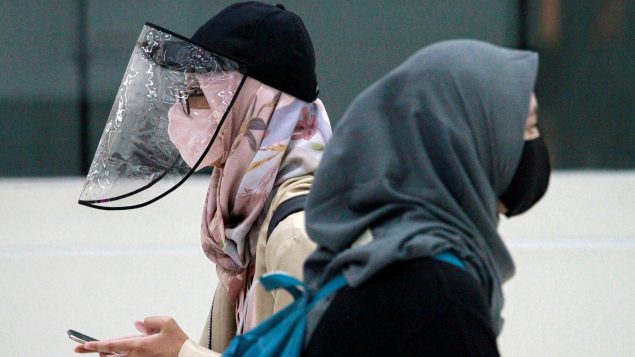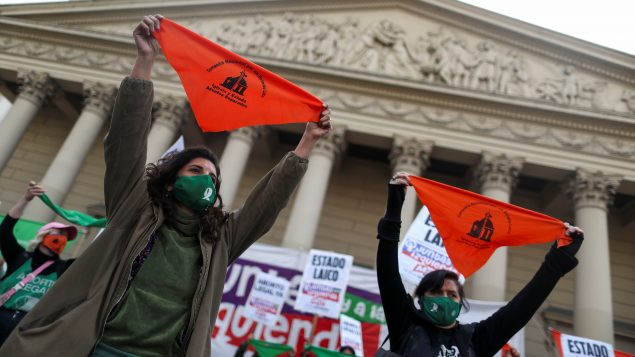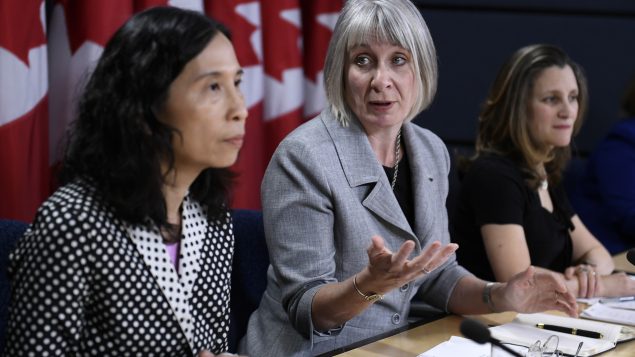With more than half of its national COVID-19 response team comprised of women, Canada has emerged as a leader among 30 countries in the way it has integrated women in its response to the pandemic, according to a new report by international humanitarian group CARE.
Canada is also the only country surveyed that announced funding and policy commitments for gender-based violence prevention and response services, sexual and reproductive health care, childcare support, and funding that specifically recognizes the economic effect of the pandemic on women, according to the report.
By contrast, only four per cent of Brazil’s national pandemic response team are women and the country has taken few steps to address women’s needs during the pandemic, the report notes.
In fact, very few of the countries surveyed have comprehensively considered gender in their COVID-19 response, the report says.
On average, women make up about one-quarter of national decision making bodies engaged in the pandemic response, the report says.
‘An opportunity for Canada’

Women are pictured wearing a protective face mask and face shield as the Indonesian government eases restrictions to prevent the spread of the coronavirus disease (COVID-19) outbreak in Jakarta, Indonesia, June 8, 2020. (Ajeng Dinar Ulfiana/REUTERS)
CARE Canada president and CEO Barbara Grantham said the report demonstrates that Canada is a leader in putting women’s representation and needs at the centre of its COVID-19 response.
“With leadership comes both responsibility and opportunity,” Grantham said.
“By working more closely with local women’s organizations that are leading the response to the pandemic in Canada and around the world, Canada can ensure a more inclusive response to the COVID crisis and a swift and inclusive recovery that helps to close rather than expand the gender gap for women in Canada and around the world.”
Jessie Thomson, CARE Canada’s vice president of international programs, said so far just 0.1 per cent of COVID-19 funding has been directed to local and national NGOs.
With funding cuts due to the pandemic, many women’s rights or women-led organizations are at risk of vanishing, she said.
“Herein lies an opportunity for Canada,” said Thomson.
The federal government can leverage its Feminist International Assistance Policy, commitments to enhance gender equality and empower women and girls made by G7 Development Ministers in Whistler in 2019, as well as the 2016 Grand Bargain between the big donors and humanitarian organisations in humanitarian aid, Thomson said.
“Canada has an opportunity to lead a global response that tackles the gender-specific implications of this crisis and ensures that women’s voices are not only heard, but are shaping the global response,” Thomson said.
Integrating women in global pandemic response decisions

Demonstrators wearing green handkerchiefs, symbolizing the abortion rights movement, as face masks to prevent the spread of the coronavirus disease (COVID-19), hold orange handkerchiefs, representing the separation of church and state, outside the Buenos Aires Metropolitan Cathedral to protest against violence towards women, on the 5th anniversary of the “Ni Una Menos” movement, in Buenos Aires, Argentina June 3, 2020. (Agustin Marcarian/REUTERS)
CARE has come up with a list of recommendations to advance these goals.
The humanitarian agency calls on the federal government to commit to channel a quarter of humanitarian funding directly to local and national actors, with at least 15 per cent earmarked for women-led and women’s rights organizations and to work with those organizations to assess progress against this goal.
CARE also wants Canada to ensure that women-led and women’s rights organizations are involved in assessing whether the humanitarian community has made meaningful progress toward this goal.
It also wants Ottawa to ensure the availability and accessibility of key services for women and girls, including prevention of gender-based violence, primary, emergency, and sexual and reproductive health care.
CARE wants Canada to facilitate humanitarian access to populations in need of assistance, so that aid groups can continue operations for at-risk women and girls.







For reasons beyond our control, and for an undetermined period of time, our comment section is now closed. However, our social networks remain open to your contributions.